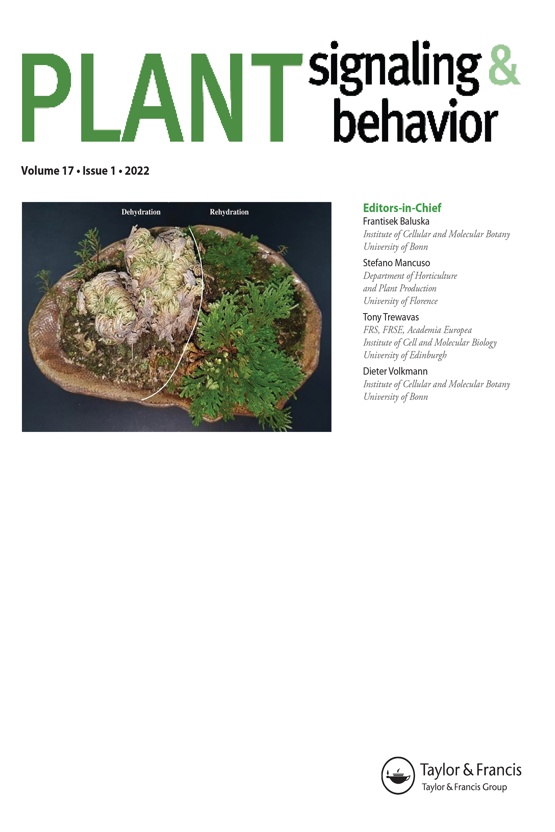Submit a Manuscript to the Journal
Plant Signaling & Behavior
For an Article Collection on
Phloem Biology in Response to Phloem Restricted Pathogens and Sucking Piercing Insects
Manuscript deadline


Article collection guest advisor(s)
Prof. Nabil Killiny,
Department of Plant Pathology Citrus Research and Education Center, University of Florida, USA
nabilkilliny@ufl.edu
Phloem Biology in Response to Phloem Restricted Pathogens and Sucking Piercing Insects
Plant phloem sap, a product of photosynthesis, is rich in the nutrients needed for the plant’s growth and development. It contains primarily sugars and organic acids, but also smaller amounts of vitamins, amino acids, fatty acids, and inorganic ions, supporting all phases of plant metabolism. Because this high-energy sap is nutrient-dense and free of feeding deterrents and toxins, it is attractive to piercing-sucking Hemipteran insects, as well as to many plant pathogens. Phloem-restricted pathogens are typically fastidious, have a small genome size, and therefore must directly import the required nutrients from their surrounding environments.
Vector-borne phloem-restricted diseases remain a significant issue in agricultural research due to their complex interactions with both the host plant and insect vector, as well as their fastidious and/or uncultivable nature. Phloem-restricted plant pathogens are transmitted exclusively by Hemipteran insects that induce their own cascade of plant responses. Phloem-restricted pathogens include viruses and bacteria (Mollicutes such as phytoplasmas and spiroplasmas, and Liberibacters). Phloem biology responses to colonization by the vector and pathogens and subsequent transmission of the pathogen include alterations in phloem sap chemical composition, callose deposition, and phloem destruction and regeneration. The intricacies of these pathosystems remain to be unraveled because of the unique and complex interactions between pathogen, plant host, and insect vector.
In this Article Collection, we invite articles focused on the responses of phloem to infection with pathogens and/or infestation with piercing-sucking Hemipteran insects. We welcome all types of manuscripts; however, research articles are preferable. Subtopics include but are not limited to:
- phloem sap and phloem tissue metabolomics
- phloem histopathology
- starch accumulation
- phloem regeneration
Keywords: phloem, hemiptera, phloem restricted pathogen, phloem sap composition, callose deposition
Guest Advisor
Nabil Killiny, Ph.D. is an associate professor in plant pathology Department, University of Florida, USA. His research interest focuses on the tritrophic interactions on phloem-restricted vector-bone plant pathosystem. He used multidisciplinary approaches including analytical chemistry, biochemistry, and omics. Here is the link to his ORCID page: Nabil Killiny (0000-0002-3895-6943) - ORCID.
Disclosure statement: The Guest Advisor declares no conflict of interest.
All manuscripts submitted to this Article Collection will undergo desk assessment and peer-review as part of our standard editorial process; the Guest Advisor for this Collection will not be handling the manuscripts (unless they are an Editorial Board member).
Please review the journal scope and author submission instructions prior to submitting a manuscript.
The deadline for submitting manuscripts is August 31st, 2025.
Please contact Ruby Ru at ruby.ru@taylorandfrancis.com with any queries and discount codes regarding this Article Collection.
To submit your papers to this Article Collection, please:
- Check "yes" for the question, "Are you submitting your paper for a specific special issue or article collection?"
- Select the relevant Article Collection from the drop-down menu under the question, "Special Issue or Article Collection Name."
Benefits of publishing open access within Taylor & Francis
Global marketing and publicity, ensuring your research reaches the people you want it to.
Article Collections bring together the latest research on hot topics from influential researchers across the globe.
Rigorous peer review for every open access article.
Rapid online publication allowing you to share your work quickly.
Submission Instructions
All manuscripts submitted to this Article Collection will undergo desk assessment and peer-review as part of our standard editorial process. Guest Advisors for this collection will not be involved in peer-reviewing manuscripts unless they are an existing member of the Editorial Board. Please review the journal Aims and Scope and author submission instructions prior to submitting a manuscript.
